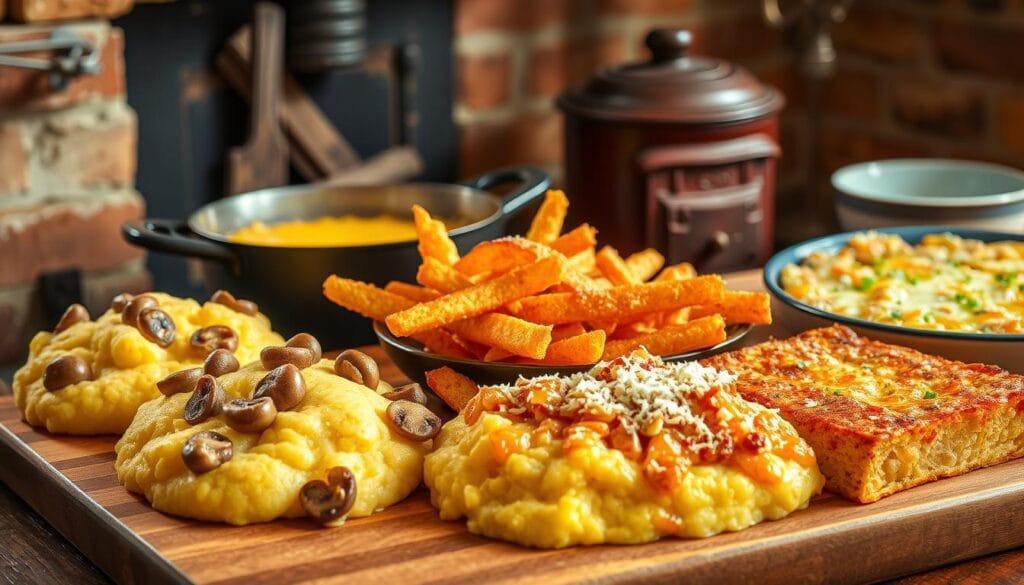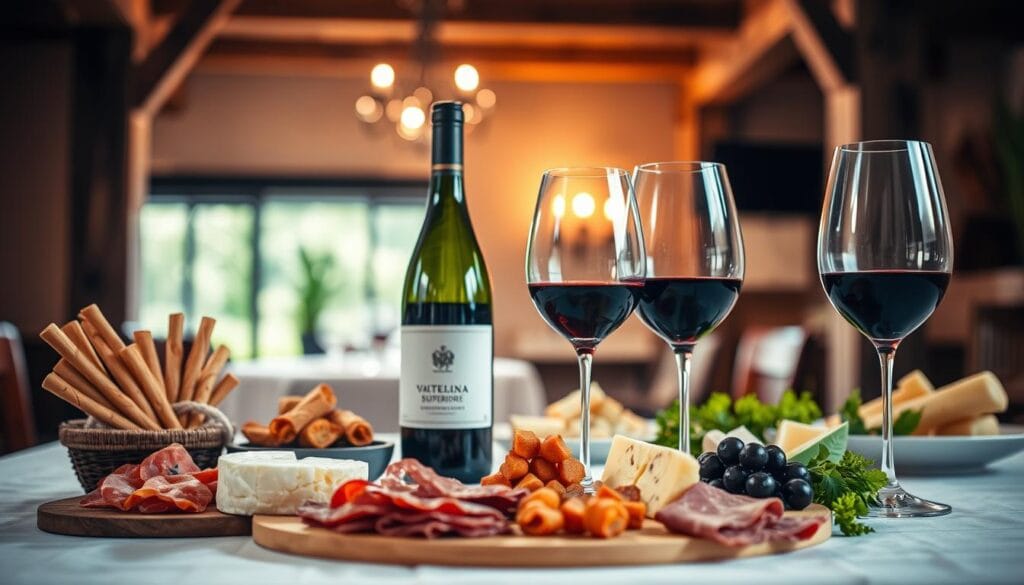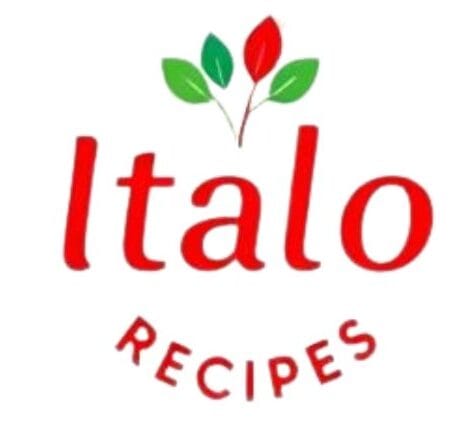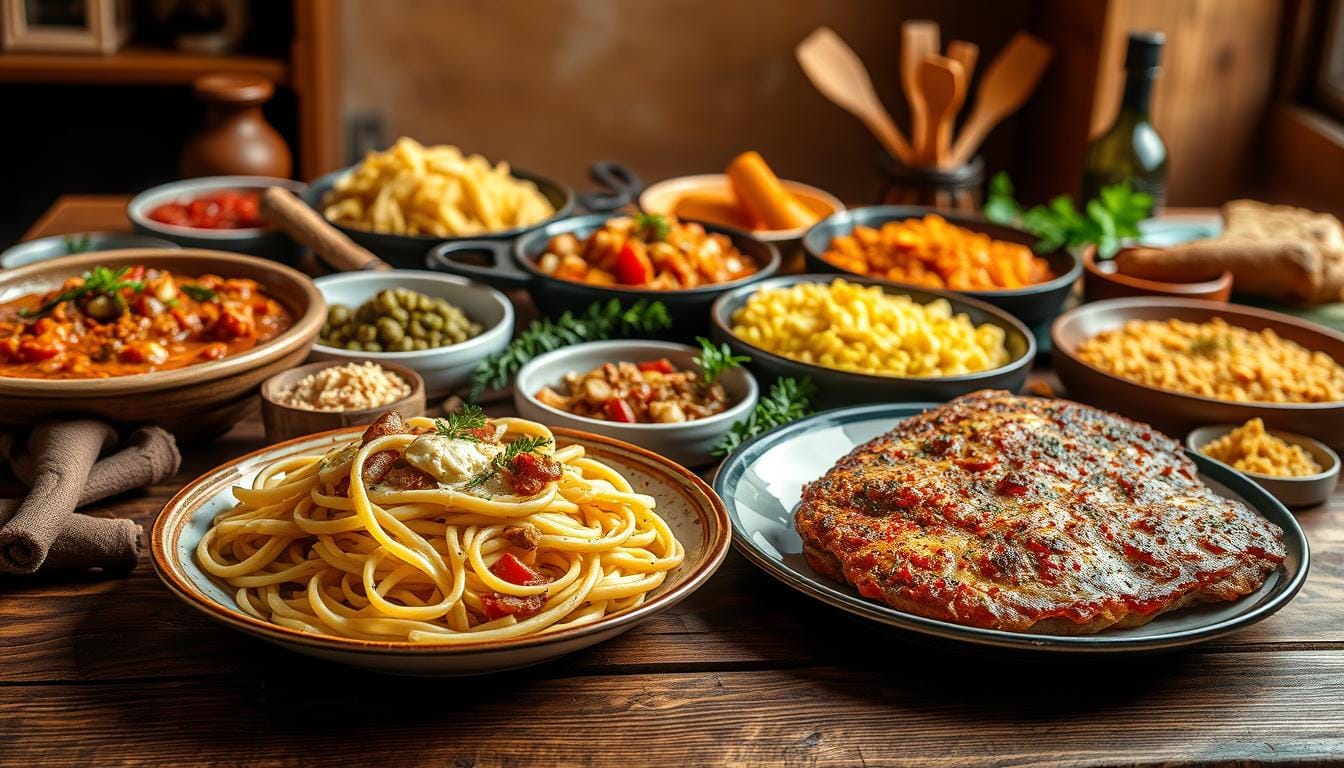What to eat in Lombardy 2025:From Pizzoccheri to Milanese cutlet To Try Absolutely
Imagine yourself enjoying the rich tastes of Lombardy’s culinary heritage in 2025. As you wander through this Italian area, you’ll find many dishes that highlight its food richness. From the filling Pizzoccheri to the crunchy Milanese cutlet, Lombardy’s food mirrors its culture.
You’re about to start a food adventure in Lombardy. Every meal here celebrates local ingredients and old recipes. The area’s food world is a mix of simple charm and fancy tastes, making it a top spot for food lovers.
Key Takeaways
- Discover the must-try dishes in Lombardy for 2025
- Explore the region’s rich gastronomic heritage
- Learn about the iconic Pizzoccheri and Milanese cutlet
- Experience the diversity of Lombardy’s culinary scene
- Find the best local ingredients and traditional recipes
The Culinary Heritage of Lombardy
Exploring Lombardy’s food scene reveals a mix of old flavors and local favorites. Its dishes are known for rich tastes, varied ingredients, and historical touches.
Historical Influences on Lombardian Cuisine
Lombardian food has been shaped by many historical events. The Austrian and Spanish dominations brought in new ingredients and ways to cook. Lombardy’s location in Northern Italy made it a meeting point for cultures. This has made its food very diverse.
Regional Diversity in Lombardy’s Food Landscape
Lombardy’s food scene is rich in regional diversity. Each area has its own special dishes. For example, Milan is famous for risotto alla milanese, while Valtellina is known for pizzoccheri. This variety makes Lombardian cuisine exciting and varied.
What to Eat in Lombardy: A Comprehensive Guide
Lombardy is a food lover’s dream, with a wide range of local dishes. These dishes show off the region’s rich food history. To really get the most out of Lombardy, you need to understand its food philosophy.
Understanding the Lombardian Food Philosophy
Lombardian food is all about local ingredients and traditional cooking methods. The area’s food is shaped by its farms, which grow rice, corn, and more. Key parts of Lombardian food philosophy are:
- Using fresh, local ingredients
- Keeping traditional recipes alive
- Preparing food in simple yet tasty ways
This cooking style not only celebrates the region’s produce. It also brings people together through food and traditions.
Seasonal Considerations for Your Culinary Journey
Lombardy’s food scene changes with the seasons. It’s important to plan your meals based on the time of year. For example:
- Spring: Try fresh asparagus and artichokes
- Autumn: Enjoy game meats and stews
- Winter: Warm up with risottos and braised meats
By following Lombardy’s seasonal food, you can enjoy the best of its culinary offerings.
Must-Try Appetizers in Lombardy
The appetizers in Lombardy show the region’s rich food culture. Each dish highlights local ingredients and traditions. As you explore this Italian region, you’ll find many starters that will excite your taste buds.
Bresaola della Valtellina
Bresaola della Valtellina is a must-try. It’s air-dried and cured beef, served thinly sliced. It comes with olive oil, lemon juice, and arugula.
The slow curing makes Bresaola tender and flavorful. It’s a key dish in Lombardian food.
Insalata di Nervetti
Insalata di Nervetti is another dish you should try. It’s a salad with boiled veal or beef tendons, onions, parsley, and a tangy dressing.
This dish shows Lombardy’s clever use of meat. It turns tough cuts into a tasty salad.
Salumi Lombardi: Salame Milano and Cotechino
Lombardy is famous for its cured meats, or Salumi Lombardi. Salame Milano has a garlicky taste. Cotechino is a pork sausage with spices and herbs.
These meats are great as antipasti. They’re often served with bread or polenta. They show the region’s must-try dishes.
Iconic First Courses of Lombardy
Lombardy’s first courses show off the region’s rich food history. They use local ingredients and traditional methods. These dishes are key to Lombardy’s culinary identity.
Risotto alla Milanese
Risotto alla Milanese is famous for its creamy texture and saffron flavor. It’s often served with Ossobuco, a braised veal shank.
Traditional Preparation Techniques
Making Risotto alla Milanese is a detailed process. It starts with toasting rice in butter, then adding broth slowly. Finally, it’s finished with saffron and Parmesan cheese. The goal is to get the rice just right, creamy but still tender.
Where to Find the Best Version
For a true taste of Risotto alla Milanese, visit Milan’s old restaurants. Try Trattoria Milanese or Osteria Langhe. You’ll find it on menus all over Lombardy, each with its own twist.
| Restaurant | Location | Specialty |
|---|---|---|
| Trattoria Milanese | Milan | Risotto alla Milanese |
| Osteria Langhe | Milan | Traditional Lombardian dishes |
Pizzoccheri della Valtellina
Pizzoccheri della Valtellina comes from the Valtellina valley. It’s buckwheat noodles with melted cheese, potatoes, and Bitto cheese. This cheese is a protected designation of origin (PDO) from the region.
Casoncelli Bergamaschi
Casoncelli Bergamaschi are stuffed pasta filled with meat and spices. They’re served with melted butter and sage. This dish is a big part of Bergamo’s food tradition, showing the region’s love for hearty flavors.
« Casoncelli are a testament to the creativity and resourcefulness of Lombardian cuisine, combining simple ingredients with complex flavors. »
These first courses show Lombardy’s food diversity and its commitment to keeping its culinary traditions alive. When you visit Lombardy, make sure to try these dishes. They offer a true taste of the region.
Signature Main Dishes You Can’t Miss
Lombardian cuisine is known for its hearty main dishes. Each dish tells a story of tradition and flavor. You’ll find a variety of iconic courses that highlight local ingredients and cooking techniques.
Cotoletta alla Milanese
Cotoletta alla Milanese is a famous dish from Lombardy. It’s a breaded and fried veal cutlet, often served with risotto or sautéed veggies. The secret to a great Cotoletta is in its preparation.
The Perfect Cotoletta: What to Look For
When you order Cotoletta alla Milanese, look for a crispy outside and tender inside. The breading should be golden and not too thick. This lets the veal shine.
Top Restaurants Serving This Classic
In Milan, Trattoria Milanese and Ristorante Sadler serve amazing Cotoletta alla Milanese. They offer a traditional take on this beloved dish.
Ossobuco
Ossobuco is a signature dish of Lombardy. It’s braised veal shanks cooked in a rich broth with veggies. Served with risotto alla milanese, it’s a hearty and flavorful meal. The slow-cooked veal is tender and full of flavor.
| Dish | Main Ingredients | Traditional Side Dish |
|---|---|---|
| Cotoletta alla Milanese | Veal cutlet, breadcrumbs, eggs | Risotto alla Milanese |
| Ossobuco | Veal shanks, vegetables, broth | Risotto alla Milanese |
| Cassoeula | Pork, cabbage, vegetables | Polenta |
Cassoeula: Winter Comfort Food
Cassoeula is a traditional Lombardian stew. It’s made with pork and cabbage, perfect for winter. Slow-cooked to perfection, it’s tender pork and flavorful veggies. It’s served with polenta, making it a filling meal.
Delicious Polenta Variations in Lombardy

In Lombardy, polenta is a key ingredient with many tasty forms. You can taste the rich history of Italy through its polenta variations. Each one has its own flavor and cultural story.
Polenta Taragna
Polenta Taragna comes from the Valtellina valley. It’s known for its dark color and strong taste. Made with buckwheat flour, it’s thicker and tastes more intense than regular polenta. It’s great as a side or with bresaola.
Polenta e Osei
Polenta e Osei is a favorite in Bergamasco. It pairs creamy polenta with roasted game birds. This mix offers a real taste of Lombardy. Don’t miss trying it to see how locals enjoy it.
Polenta Uncia from Lake Como
Polenta Uncia is found near Lake Como. It’s creamy and goes well with fish or meat stews. Try it in local trattorias around Lake Como for a taste of fresh, local ingredients.
| Polenta Variation | Region | Characteristics |
|---|---|---|
| Polenta Taragna | Valtellina valley | Dark color, robust flavor, made with buckwheat flour |
| Polenta e Osei | Bergamasco area | Served with roasted game birds, soft and creamy |
| Polenta Uncia | Lake Como | Creamy texture, served with fish or meat stews |
Cheese Specialties of the Lombardy Region
Exploring Lombardy’s culinary world reveals a treasure trove of cheese specialties. These cheeses are a key part of the region’s food culture. They are not just tasty on their own but also elevate local dishes.
The cheeses of Lombardy reflect its rich culture and varied landscapes. Artisanal cheeses here boast unique flavors and textures.
Gorgonzola: The King of Lombardian Cheeses
Gorgonzola stands out as Lombardy’s most famous cheese. It’s known for its blue-green veining and strong taste. This cheese is a must in Lombardian cooking, from salads to pizzas. Gorgonzola’s versatility and rich taste win hearts everywhere.
Taleggio and Its Unique Flavor Profile
Taleggio is another celebrated Lombardian cheese. It’s creamy and has a mild, fruity taste. Its aging process in brine gives it a unique orange rind and soft inside. It’s perfect as a dessert cheese or in salads and pasta.
« Taleggio is a cheese that embodies the essence of Lombardy’s gastronomic tradition, with its delicate balance of flavors and luxurious texture. »
Bitto, Quartirolo, and Other Local Varieties
Lombardy is home to more than just Gorgonzola and Taleggio. Bitto, a strong cheese from Valtellina, is great on pasta or polenta. Quartirolo, a soft, young cheese, is perfect for snacking or salads. These cheeses add to Lombardy’s rich cheese-making history.
Sweet Treats and Desserts to Savor
Exploring Lombardy’s desserts is like a journey through history and culture. Each sweet bite tells a story. The region is known for its traditional sweets, each with its own history and cultural value.
Panettone: Milan’s Famous Christmas Cake
Panettone is Milan’s star, a sweet bread loaf for Christmas. It’s filled with raisins and candied fruits. Enjoy it with coffee or as part of a holiday dessert spread.
Torta Sbrisolona from Mantua
Torta Sbrisolona is a crumbly, almond-flavored dessert from Mantua. It’s topped with powdered sugar. Locals and visitors love it for its unique taste.
Bussolano and Other Regional Pastries
Bussolona is a ring-shaped pastry with a sweet, buttery taste. Lombardy also offers Torta di Ricotta and Amaretti cookies. These are great with coffee or as a snack.
Some must-try desserts in Lombardy include:
- Panettone during Christmas
- Torta Sbrisolona in Mantua
- Bussolano and other regional pastries throughout the year
Exploring Lombardy’s desserts reveals each region’s unique specialties. It makes the culinary journey exciting.
Lombardy’s Wine and Beverage Pairings

Lombardy’s food scene is amazing, and so is its wine and drink culture. The right drink can make a meal unforgettable. Lombardy has many great wines and drinks to go with its food.
Franciacorta: Italy’s Answer to Champagne
Franciacorta is a sparkling wine from Lombardy, made like Champagne. It’s mostly Chardonnay, Pinot Noir, and Pinot Blanc grapes. It’s great for celebrations and goes well with risotto alla milanese or polenta e osei.
Valtellina Wines: Nebbiolo of the North
Valtellina wines, especially Nebbiolo, are bold. They’re aged long, which makes them complex. They’re perfect with bresaola or cotechino.
Aperitivo Culture and Signature Drinks
Lombardy, especially Milan, loves its aperitivo culture. It’s a time to enjoy a drink and small snacks before dinner. Favorites are Negroni, Spritz, and Campari. Try a Negroni sbagliato for something different, with Franciacorta instead of gin.
| Wine/Drink | Recommended Pairing |
|---|---|
| Franciacorta | Risotto alla Milanese, Polenta e Osei |
| Valtellina Nebbiolo | Bresaola, Cotechino |
| Negroni | Antipasti, Cheese Platter |
Where to Find Authentic Lombardian Cuisine in 2025
To truly immerse yourself in Lombardy’s culinary culture in 2025, you need to venture beyond the usual tourist spots and find where locals dine. Authentic Lombardian cuisine is not just about the food; it’s about the experience and the connection to the region’s heritage.
Top Restaurants in Milan
Milan, being the hub of Lombardy, offers a plethora of dining options that showcase the region’s culinary excellence. When looking for top restaurants, you can expect a blend of traditional and modern interpretations of Lombardian dishes.
Fine Dining Experiences
For a luxurious dining experience, consider establishments like Salaì or Trattoria Milanese, where you can savor refined versions of classic dishes like Risotto alla Milanese.
Authentic Trattorias
For a more casual, authentic experience, head to trattorias such as Trattoria al Moro or Osteria Langhe, where traditional recipes are served with a warm, welcoming atmosphere.
Hidden Gems in Smaller Lombardy Towns
Beyond Milan, smaller towns like Bergamo, Mantua, and Lake Como offer unique dining experiences that are deeply rooted in local traditions. Here, you can discover family-run eateries and local specialties that are off the beaten path.
Food Markets and Festivals Not to Miss
Lombardy’s food markets and festivals are a testament to its vibrant food culture. Visit the Mercato Metropolitano in Milan or attend the Festa della Vendemmia in Franciacorta to taste the region’s produce and wines.
| Location | Recommended Eateries | Specialties |
|---|---|---|
| Milan | Salaì, Trattoria Milanese | Risotto alla Milanese, Ossobuco |
| Bergamo | Trattoria al Moro | Casoncelli, Polenta Taragna |
| Lake Como | Osteria Langhe | Freshwater Fish, Risotto con Pesce |
Dining Etiquette and Customs in Lombardy
When dining in Lombardy, knowing the local customs and etiquette is key. This knowledge enhances your dining experience. Lombardy is proud of its rich food culture, and understanding dining etiquette makes your visit better.
Meal Structure and Timing
Lombardian meals have many courses, each with its own importance. A meal starts with an antipasto (appetizer). Then comes a primo (first course), like risotto or pasta. The secondo (main course) is served with a contorno (side dish).
Meals can last for hours, especially on weekends and special days. This allows for a relaxed and enjoyable dining experience.
| Meal Course | Typical Dish | Description |
|---|---|---|
| Antipasto | Bresaola della Valtellina | A cured meat dish, often served with arugula and shaved Parmesan |
| Primo | Risotto alla Milanese | A creamy risotto with saffron, typically served with ossobuco |
| Secondo | Cotoletta alla Milanese | A breaded and fried veal cutlet, a classic Lombardian main course |
Local Customs to Be Aware Of
Always wait for the host to show you where to sit. Follow their lead on when to start eating. Tipping is less common in Italy, but it’s still appreciated for good service.
Be ready for a relaxed pace during meals. In Lombardy, dining is a social and enjoyable experience.
Conclusion: Embracing the Flavors of Lombardy in 2025
Starting your journey through Lombardy’s food scene, you’ll find a mix of old and new. You’ll taste dishes like Pizzoccheri della Valtellina and Cotoletta alla Milanese. Each dish shares a piece of the region’s history and love for food.
Exploring Lombardy’s flavors means diving into local ingredients and cooking methods. You’ll enjoy a Risotto alla Milanese in a Milanese trattoria or try artisanal cheeses at a market. This way, you’ll truly taste Lombardy’s essence.
When planning your trip to Lombardy in 2025, don’t just stick to famous spots. Explore small towns, meet local producers, and talk to the community. This will let you experience Lombardy’s true flavors and help keep its culinary traditions alive.

